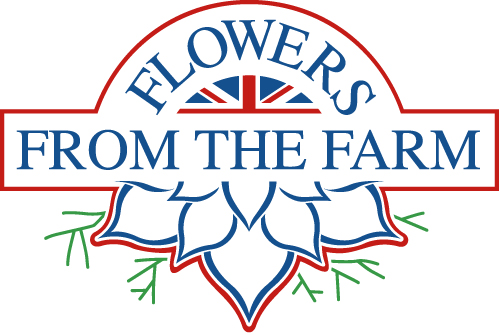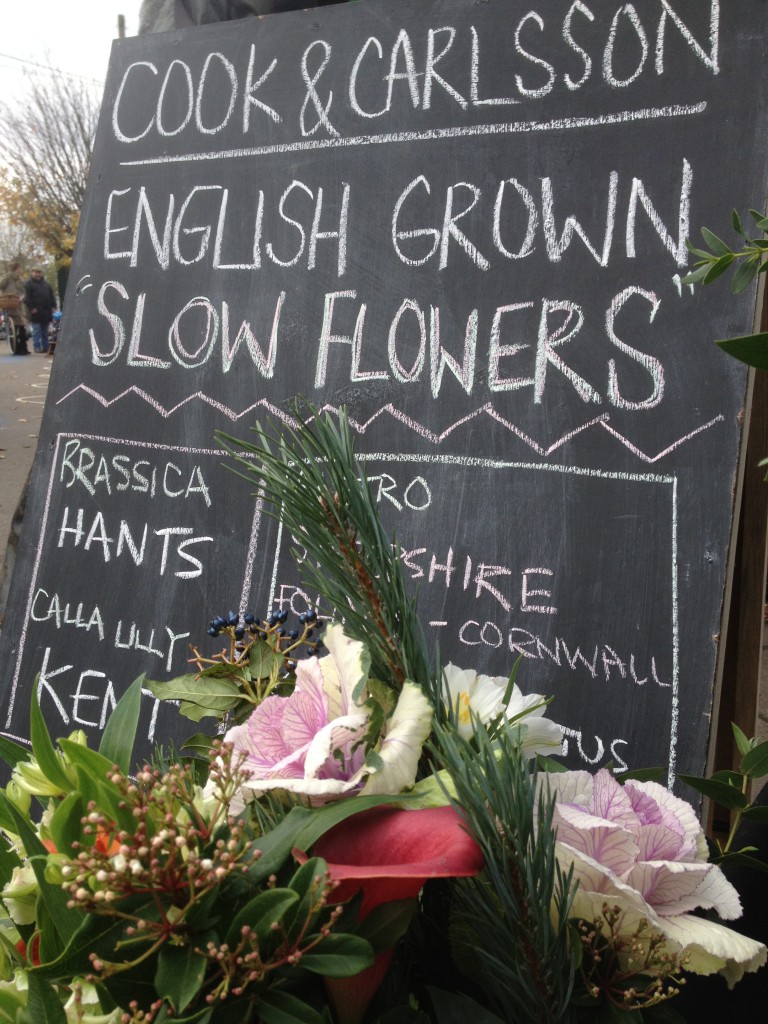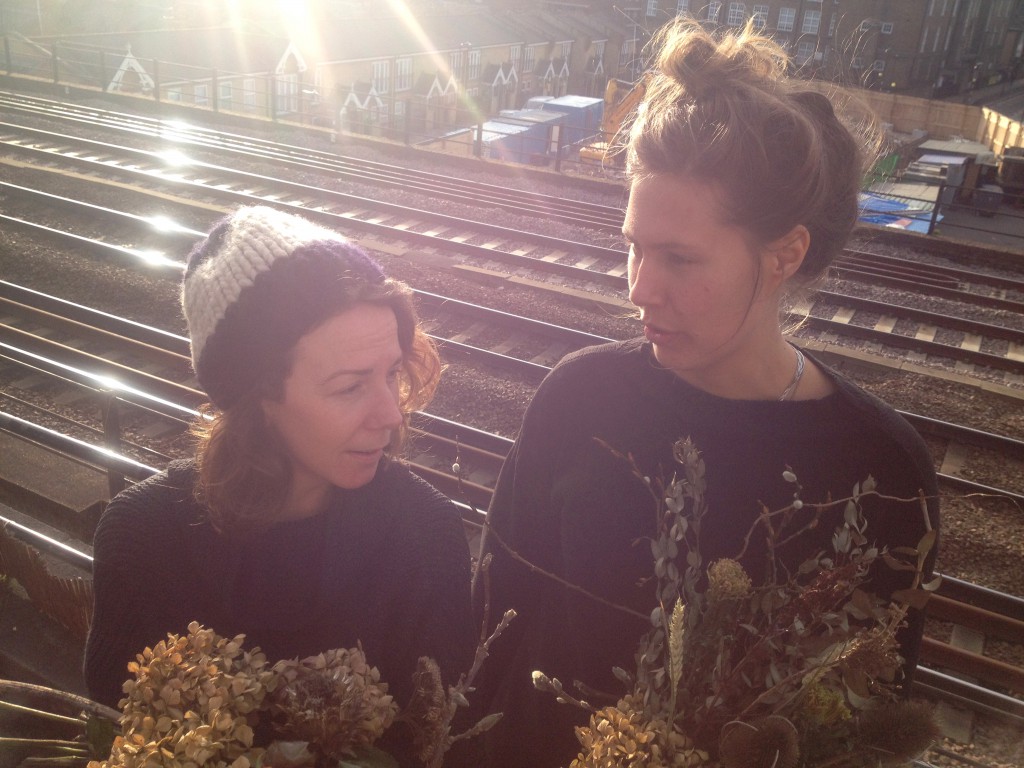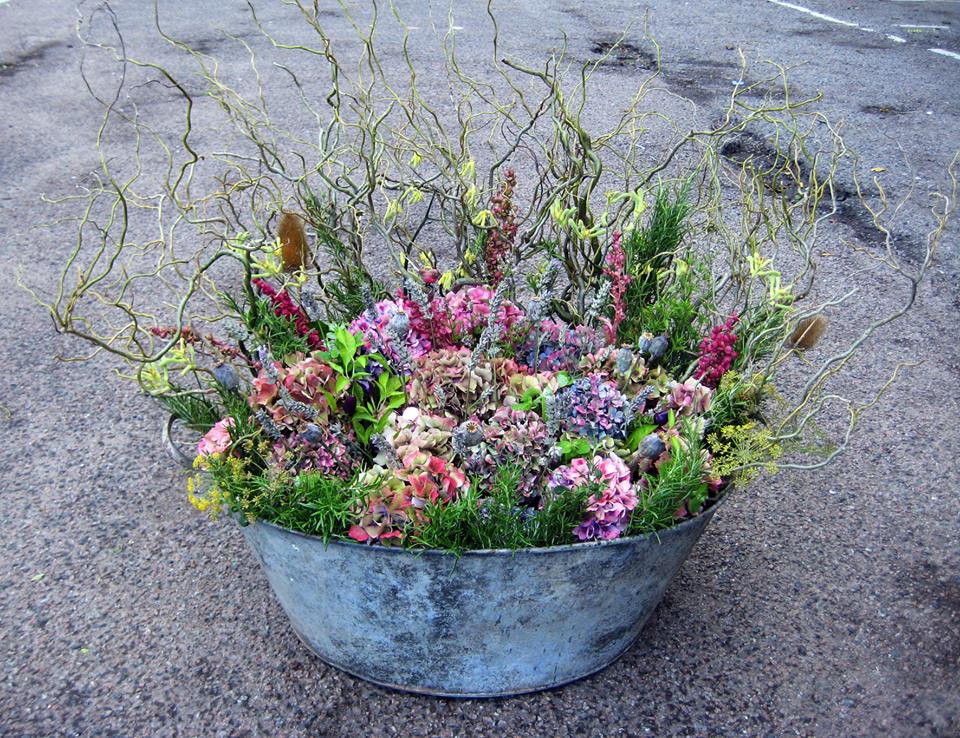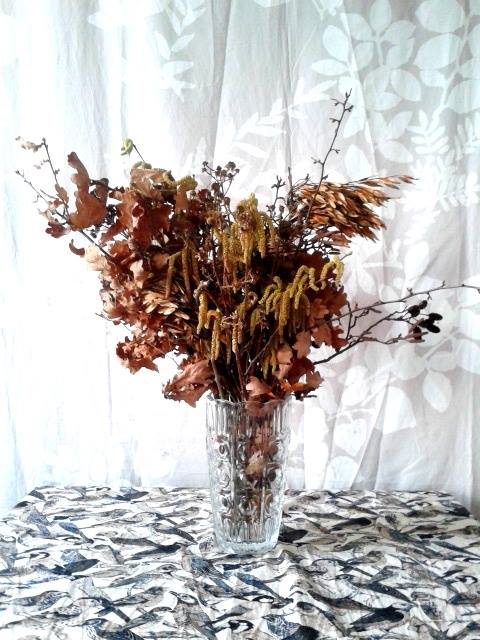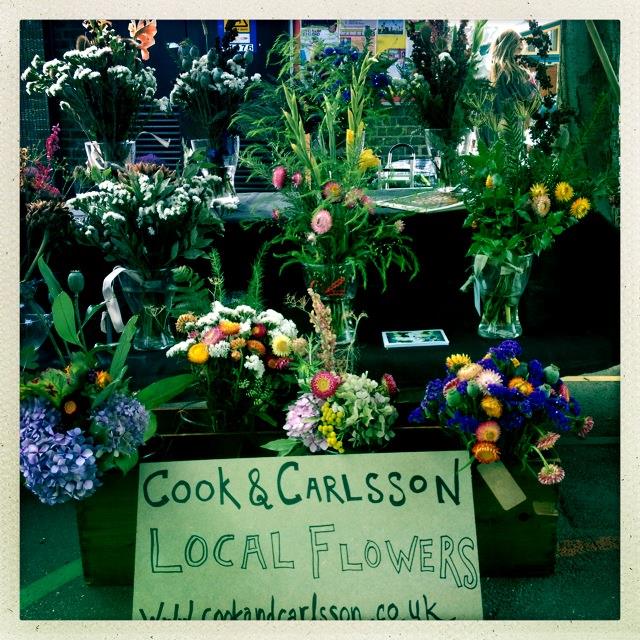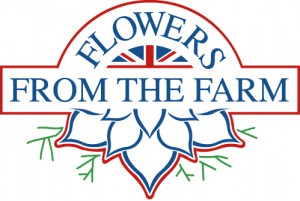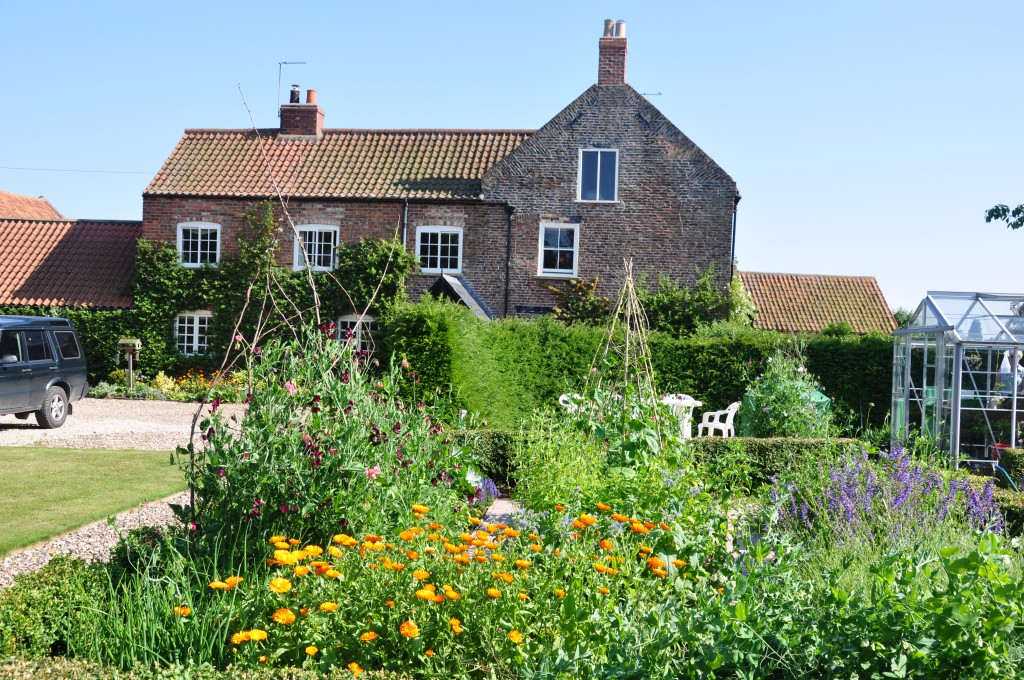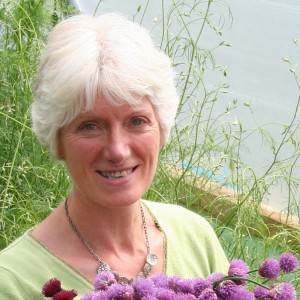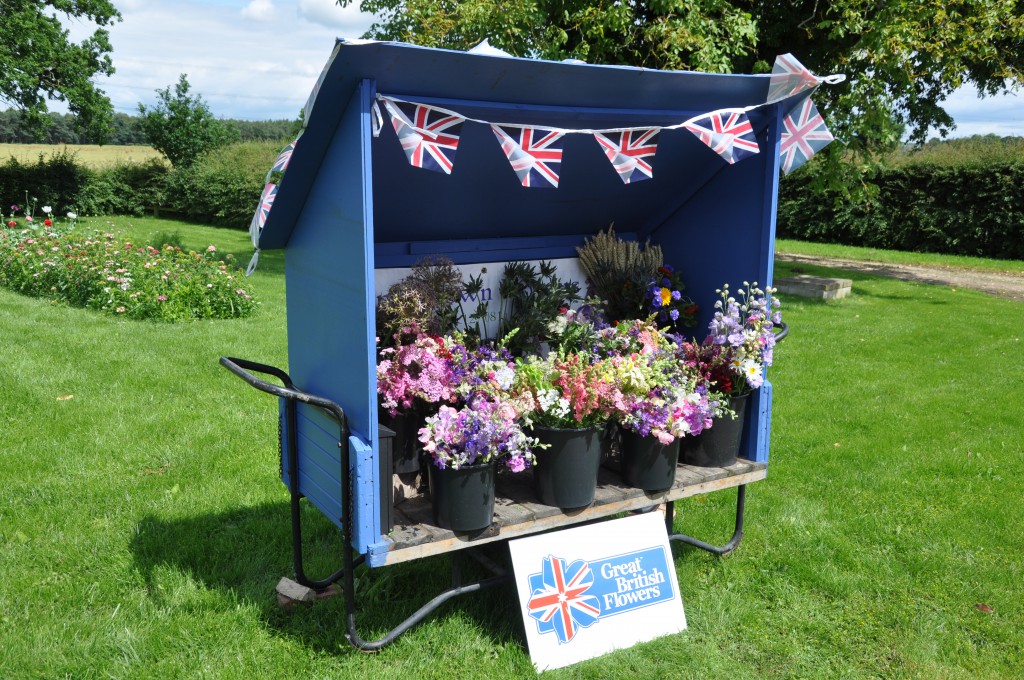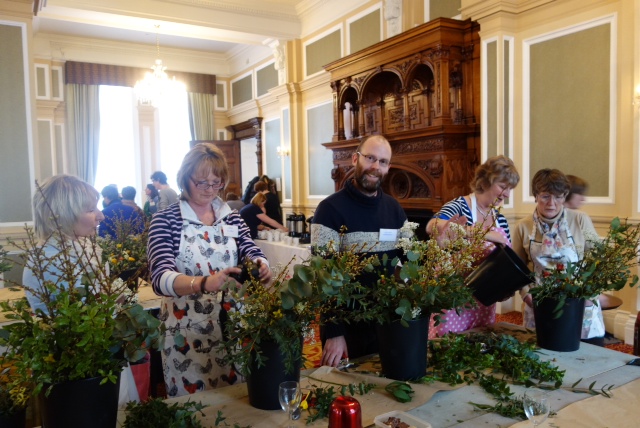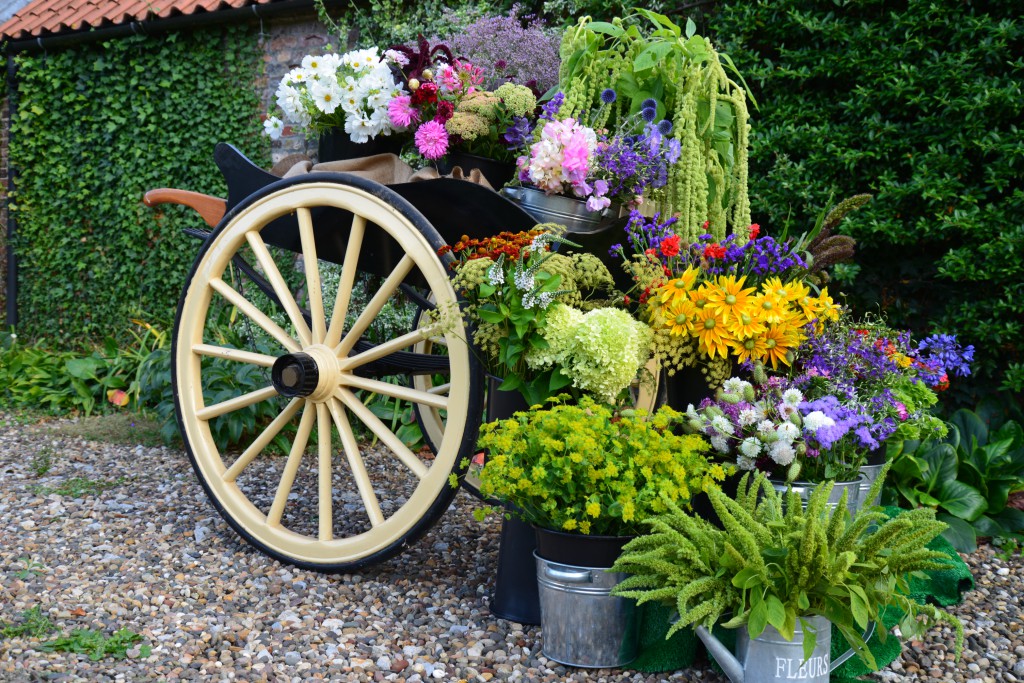Podcast: Play in new window | Download
Subscribe: Apple Podcasts | Podcast Index | RSS | More
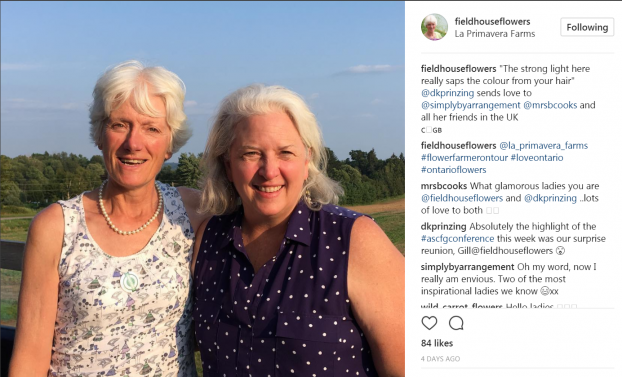
I’m smiling along with today’s guest, Gill Hodgson (L) of Fieldhouse Flowers and Flowers from the Farm, a UK-based association of flower farmers and florists who promote British-grown botanicals.
In 2014, when this podcast was in its first year of existence, I met Gillian Hodgson “virtually,” as is the case for so many of us who value the positive attributes of social media.
On February 18, 2014, appearing on what was only the 30th episode of the Slow Flowers Podcast, I introduced you to Gillian and called her the Mother of the British Flowers movement.
A Yorkshore-based flower farmer and owner of Fieldhouse Flowers, Gill founded Flowers from the Farm in in 2011.
The not-for-profit network run and administered solely by volunteers has grown to more than 500 members.
Most members are sole traders running small or micro businesses: farmers, smallholders and gardeners, who are using their knowledge of horticulture and floristry to grow and present a different range of flowers from those available in the supermarkets and the wholesale markets.
From Cornwall up to Scotland, and every region in between, these artisan flower farmers are growing old favourites: Sweet Peas, Bells of Ireland, Dahlias and Aquilegia, as well as trying out lots of new varieties.
Flowers from The Farm’s members grow for wholesale, sell to retail and event florists, as well as to the public at farmers’ markets and craft fairs. Some have farm gate sales or have teamed up with local shops to sell their bunches and bouquets. There are also have online retail florists, and utterly brilliant wedding and event florists among the membership. Sound familiar? It’s a lot like Slowflowers.com, of course.

Love the beautiful new website for Flowers from the Farm (and PS, this image shown was one that Sarah Statham of Simply by Arrangement and several other Yorkshire members created for the 2015 British Flowers Week campaign)
On the beautiful, new, 2.0 version of Flowers From the Farm’s website, relaunched recently, we learn this: Although the majority of British flowers are sold during the summer months, flowers can be grown in Britain all year round. Scented Narcissi start to come out of Cornwall and the Scillies in October; tulips from Lincolnshire are in the shops for Christmas. Many members are skilled at forming gorgeous winter foliage, scented shrubs and the winter flowers into amazing displays during the shortest days.
Flowers from the Farm brings together all these growers and florists and provides local meetings and events, encouraging members to come together to build displays at all the big flower shows, holding workshops to improve members’ skills and – equally importantly – provide the place where you’ll make friends with like-minded people who will become your new work colleagues. Again, sounds a lot like our Slow Flowers community, right?
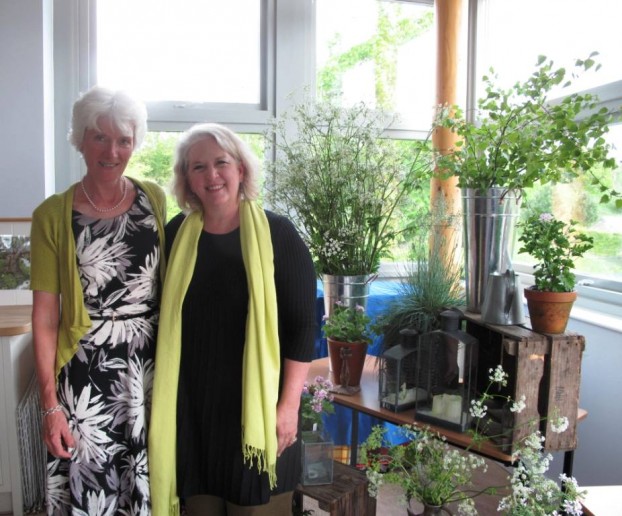
It was lovely to meet Gill Hodgson face-to-face after our long-distance friendship! She is as committed to putting British flowers on the map as I am about doing the same with American grown flowers.
Just over a year after Gill and I recorded our long-distance Podcast interview via Skype, I met her in person! Along with many other Flowers from the Farm colleagues, farmers and florists in the Yorkshire region, we gathered at a very special high tea hedl at RHS Harlow Carr, a beautiful botanical garden.
On that same trip, I met and interviewed Helen Evans of London’s New Covent Garden Flower Market who encouraged me to emulate British Flowers Week and launch American Flowers Week. I also met Sarah Statham of Simply by Arrangement, who hosted me in Hebden Bridge, a village in Yorkshire, and showed me (and my mother, Anita) the most magnificent, unforgettable time.
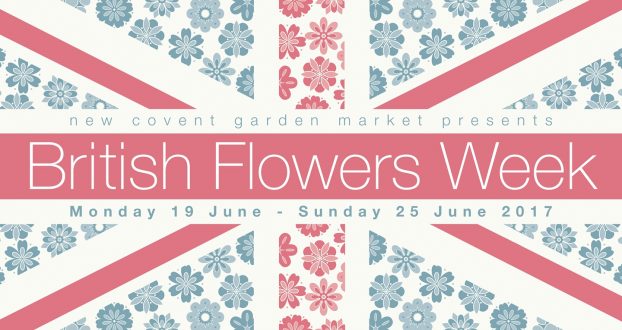 Here are links to those conversations, captured for past episodes of the Slow Flowers Podcast:
Here are links to those conversations, captured for past episodes of the Slow Flowers Podcast:
Why am I going on and on about these wonderful British friends and their homegrown flowers?
Well, today, I have a lovely update for you — a new conversation with Gill Hodgson. To my complete surprise, and delight, I reunited with Gill in person last week at the Association of Specialty Cut Flower Growers’ regional meeting in Ontario, Canada.
I attended the fabulous and well-attended 2-day conference, hosted by many ASCFG Canadian members, after spending a few days at the Garden Writers Association symposium in Buffalo, NY. Once I realized that I could add a few days to my travels and spend time with ASCFG members, many of whom are involved in the Slow Flowers Community, I jumped at the chance.
And there, walking alongside me during a tour at Green Park Nurseries was my friend, Gill! On a whim, she decided to fly over to Canada to attend the conference and have a fun vacation with her husband.
Of course, with my digital recorder in my backpack, Gill had little choice but to sit down with me for a 30-minute interview. I asked her to update the Slow Flowers Community on news about the British-grown flower community and you’ll love hearing about what’s happening in a very dynamic hub for local, British-grown flowers ~seasonal, local and sustainable, much like the Slow Flowers narrative.
Here’s how you can follow Flowers from the Farm:
Flowers from the Farm on Facebook
Flowers from the Farm on Instagram
Flowers from the Farm on Twitter
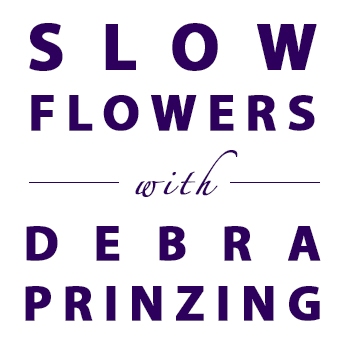 The Slow Flowers Podcast has been downloaded more than 222,000 times by listeners like you. Thank you to each one of you for downloading, listening, commenting and sharing. It means so much.
The Slow Flowers Podcast has been downloaded more than 222,000 times by listeners like you. Thank you to each one of you for downloading, listening, commenting and sharing. It means so much.
If you value the content you receive each week, I invite you to show your thanks and support the Slow Flowers Podcast with a donation — the button can be found on our home page in the right column. Your contributions will help make it possible to transcribe future episodes of the Podcast.
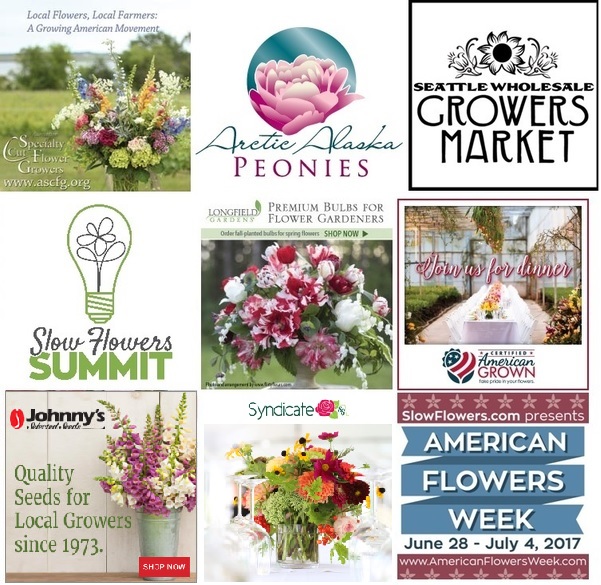 Thank you to family of sponsors
Thank you to family of sponsors
Certified American Grown Flowers. The Certified American-Grown program and label provide a guarantee for designers and consumers on the source of their flowers. Take pride in your flowers and buy with confidence, ask for Certified American Grown Flowers. To learn more visit americangrownflowers.org.
Arctic Alaska Peonies, a cooperative of 50 family farms in the heart of Alaska providing high quality, American Grown peony flowers during the months of July and August. Visit them today at arcticalaskapeonies.com
Seattle Wholesale Growers Market, a farmer-owned cooperative committed to providing the very best the Pacific Northwest has to offer in cut flowers, foliage and plants. The Growers Market’s mission is to foster a vibrant marketplace that sustains local flower farms and provides top-quality products and service to the local floral industry. Find them at seattlewholesalegrowersmarket.com
Longfield Gardens provides home gardeners with high quality flower bulbs and perennials. Their online store offers plants for every region and every season, from tulips and daffodils to dahlias, caladiums and amaryllis. Visit them at lfgardens.com.
Syndicate Sales, an American manufacturer of vases and accessories for the professional florist. Look for the American Flag Icon to find Syndicate’s USA-made products and join the Syndicate Stars loyalty program at syndicatesales.com.
Johnny’s Selected Seeds, an employee-owned company that provides our industry the best flower, herb and vegetable seeds — supplied to farms large and small and even backyard cutting gardens like mine. Check them out at johnnysseeds.com.
Association of Specialty Cut Flower Growers. Formed in 1988, ASCFG was created to educate, unite, and support commercial cut flower growers. It mission is to help growers produce high-quality floral material, and to foster and promote the local availability of that product. Learn more at ascfg.org.
I’m Debra Prinzing, host and producer of the Slow Flowers Podcast. Next week, you’re invited to join me in putting more American grown flowers on the table, one vase at a time. And If you like what you hear, please consider logging onto Itunes and posting a listener review.
The content and opinions expressed here are either mine alone or those of my guests alone, independent of any podcast sponsor or other person, company or organization.
The Slow Flowers Podcast is engineered and edited by Andrew Brenlan. Learn more about his work at KineticTreeFitness.com.
Our music today:









